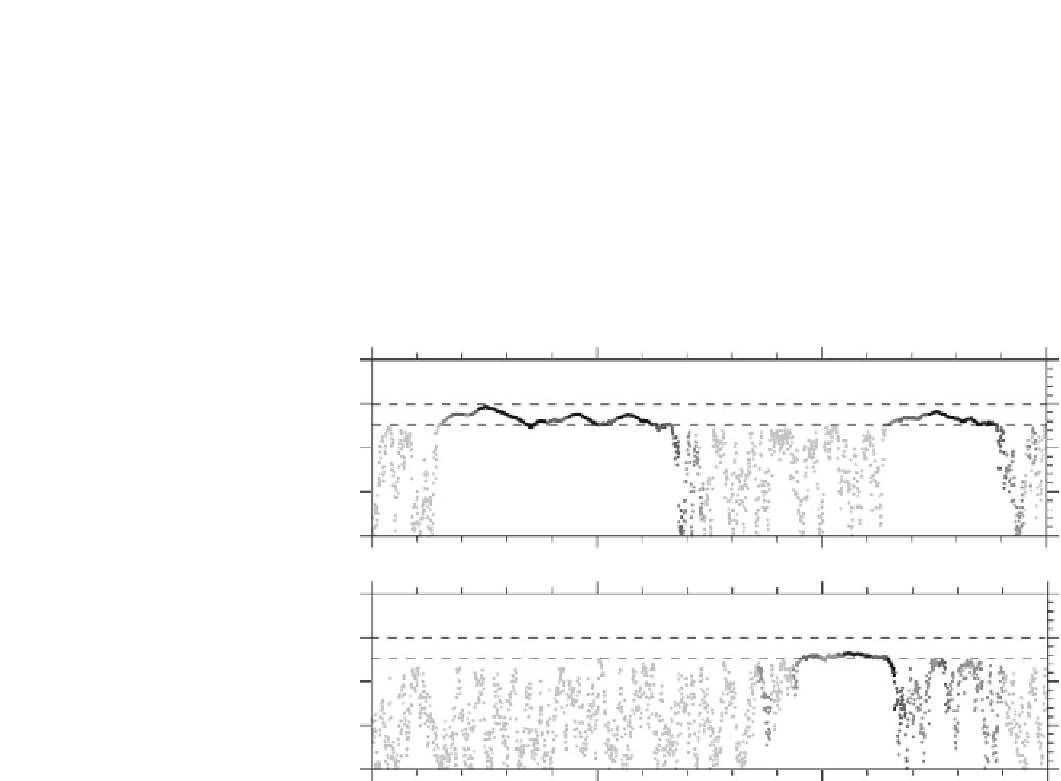Geoscience Reference
In-Depth Information
(a)
0
-20
-40
-60
-80
0 5 10 15
(b)
0
-20
-40
-60
-80
0 5 10
15
Time (days)
Figure 7.12
Time series of particle tracks in a stratified water column for (a) a motile
particle that can swim at 0.1 mm s
1
in response to light and nutrient requirements, and
(b) a neutrally-buoyant particle. The horizontal dashed lines mark the upper and lower bounds
of the thermocline. The particles are shaded according to their nutrient status: lighter shading
represents particles that are nutrient replete, darker shading indicates particles that need to
energetic region, it can play a role in the competition between phytoplankton species.
Motility can be more successful in regions with weak bottom-layer turbulence
arising from small tides. Thin layers of phytoplankton, often dominated by one species
Formation of these layers is still not fully understood, but is thought to be controlled
by one or more of: (i) velocity shear and straining across pycnoclines, (ii) cell motility
seen to form, dissipate, and re-form within a diurnal cycle (Sullivan et al., 2010). In
this latter case (e.g. the layer of phytoplankton in
Fig. 7.7d
), and in contrast to the
SCM in tidally energetic shelf seas, it was demonstrated that in situ growth cannot
form the layer fast enough. Instead, the time scales of layer formation suggest
directed cell swimming as the primary formation mechanism (Steinbuck et al.,
7.3.4
Phytoplankton species in the SCM
While the spring surface bloom is dominated by diatoms, the phytoplankton popu-
lation within the subsurface chlorophyll maximum is often found to be much more


Search WWH ::

Custom Search